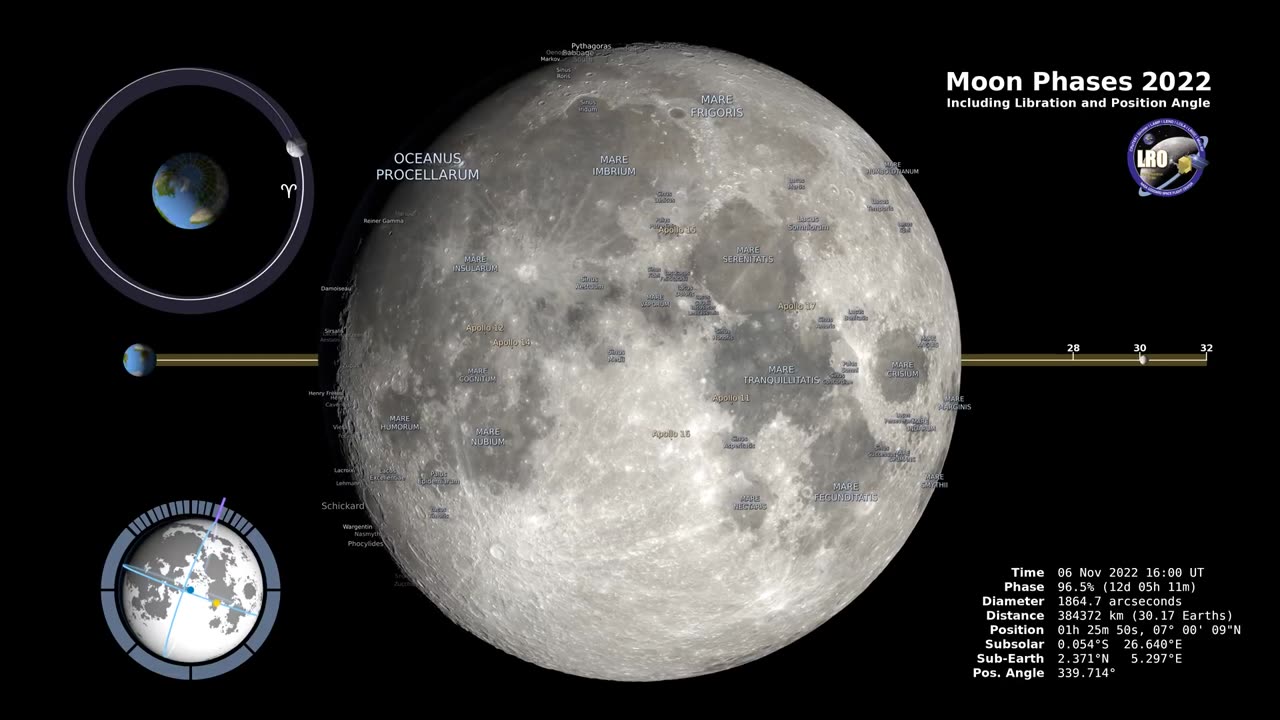Premium Only Content

Phases of Moon by NASA
This video shows different phases of moon ultra HD released by NASA on their official website
Introduction:
Start with an attention-grabbing introduction that highlights the mystery and beauty of the moon's changing appearance.
Mention that while science explains the phases of the moon through the heliocentric model, there are alternative viewpoints, such as the flat earth theory.
Round 1: Science's Perspective - The Phases of the Moon
Begin by explaining the heliocentric model, where the Earth orbits the Sun and the moon orbits the Earth.
Describe the different phases of the moon: New Moon, Waxing Crescent, First Quarter, Waxing Gibbous, Full Moon, Waning Gibbous, Third Quarter, and Waning Crescent.
Highlight how these phases are a result of the relative positions of the Earth, moon, and Sun.
Round 2: The Flat Earth Perspective - Lunar Illusions
Introduce the flat earth theory's perspective on the moon.
Explain that according to this theory, the moon is a flat disc that emits its own light, similar to a spotlight.
Describe how the changing phases could be attributed to the moon's movement and rotation above the flat Earth, creating the illusion of waxing and waning.
Round 3: Moon's Journey - Eclipses and Beyond
Discuss lunar and solar eclipses from both perspectives. Explain how they occur due to the alignment of the Earth, moon, and Sun.
Contrast the scientific explanation of eclipses with how flat earth theory might interpret these events.
Highlight other interesting moon-related phenomena, like tides, and show how the heliocentric model offers a comprehensive understanding.
Round 4: Moon Landing and Satellite Observations
Discuss the historic Apollo moon landings and the evidence they provide for the moon's physical features.
Contrast this with flat earth arguments against the moon landings and how they interpret the images and data.
Present satellite observations of the moon and how they corroborate the scientific model.
Conclusion:
Recap the main points discussed in the presentation.
Emphasize the scientific consensus and the overwhelming evidence supporting the heliocentric model.
Encourage the audience to continue exploring the wonders of space through science and critical thinking.
-
 LIVE
LIVE
JdaDelete
4 hours agoProject Zomboid with the Boys | The Great Boner Jam of 2025
383 watching -
 LIVE
LIVE
SpartakusLIVE
4 hours agoYoung Spartan STUD teams with old gamers for ultimate BANTER with a SMATTERING of TOXICITY
781 watching -
 1:50:39
1:50:39
Kim Iversen
6 hours agoShocking Proposal: Elon Musk for Speaker of the House?! | IDF Soldiers Reveal Atrocities—'Everyone Is a Terrorist'
40.8K68 -
 43:27
43:27
barstoolsports
9 hours agoOld Dog Bites Back | Surviving Barstool S4 Ep. 9
71.8K2 -
 LIVE
LIVE
Right Side Broadcasting Network
7 days agoLIVE: TPUSA's America Fest Conference: Day One - 12/19/24
8,970 watching -
 DVR
DVR
Man in America
1 day agoPfizer Has Been Caught RED HANDED w/ Dr. Chris Flowers
17.8K4 -
 2:24:15
2:24:15
Slightly Offensive
7 hours ago $1.18 earnedAttempted ASSASSINATION of Nick J Fuentes LEAVES 1 DEAD! | Guest: Mel K & Breanna Morello
16.7K14 -
 1:43:08
1:43:08
Roseanne Barr
6 hours ago $2.96 earned"Ain't Nobody Good" with Jesse Lee Peterson | The Roseanne Barr Podcast #79
55.5K27 -

The StoneZONE with Roger Stone
3 hours agoTrump Should Sue Billionaire Governor JB Pritzker for Calling Him a Rapist | The StoneZONE
31.1K3 -
 DVR
DVR
Flyover Conservatives
22 hours agoAmerica’s Psychiatrist Speaks Out: Are We Greenlighting Violence? - Dr. Carole Lieberman | FOC Show
16.5K5